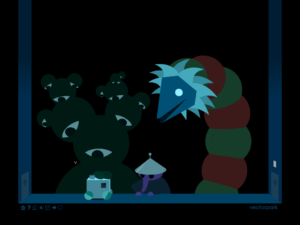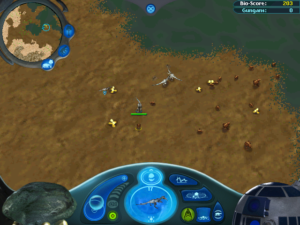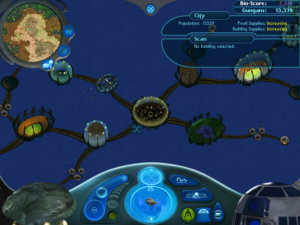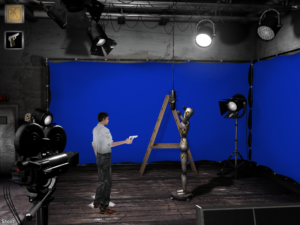Plants vs Zombies
I’m almost a week late with this post: I purchased Plants vs Zombies, Pop Cap’s foray into the Tower Defense genre, on Monday, and played all the way through Adventure Mode that day. (I’ve noted before now that recent Pop Cap games tend to treat the “adventure mode” or “story mode” as a kind of brief prelude to all the special challenges and minigames that occupy the bulk of the player’s time. Nonetheless, I regard adventure mode as enough to get it off the Stack.)
Tower Defense is one of the few genres born on the web, and still doesn’t have a great deal of representation outside of ad-supported Flash game sites. Perhaps this is why there’s still so much experimentation going on within the genre: there hasn’t been a major best-seller that everyone strives to imitate. PvZ‘s biggest experiment is splitting the playfield into several lanes that are mostly isolated from each other. (There are some effects that affect the lanes adjacent to where they’re used, but they tend to be expensive.) I didn’t care for this mechanic at first — it seemed like it just invited symmetric action, placing the same defenses along all lanes, which seemed like mere busywork. But it becomes more interesting when you’re short on resources, and still have to defend all the lanes separately and simultaneously. If you can’t afford what you need to destroy the zombies on all of them, you might switch to delaying tactics on some of them.
The title may sound like James-Ernest-style random wackiness, but when you think about it, it’s based on the attributes required for the tower defense genre to work: the attackers have to be slow and stupid (or at least undeterred by certain death), and the defenders have to be stationary. Which is not to deny that the particular choice of plants and zombies for these roles was made for their wacky value. The whole game is full of Pop Cap’s signature deadpan goofiness, and sometimes even surprises the player with humorous enemy behavior, just like I Was In the War. Pop Cap’s sense of humor is such an integral part of their more recent releases that I think it’s worth remembering that they didn’t always have one. Their first major success, Bejewelled, was about as funny as Tetris. I was reading an article recently about how Valve’s Orange Box shifted the gaming zeitgeist back towards humor, and it’s definitely had an influence on PvZ: after you win Adventure Mode, there’s a musical number that’s a clear attempt at being this year’s Still Alive. But Pop Cap’s sense of humor was developing well before the Orange Box: Insaniquarium (2004), like PvZ, used jokey character descriptions of the various entities in the game.
In fact, PvZ has quite a lot in common with Insaniquarium (which makes sense, because it was written by the same people). One of PvZ’s unlockable minigames, “Zombiquarium”, references it quite directly, and there’s a Tamagotchi-like “Zen Garden” mode that’s basically a plant-based version of Insaniquarium‘s “Virtual Tank” mode. Both games have an overall mechanic wherein the reward for completing a level is usually a new helper species with its own unique abilities. But most of all, they involve similar activity. Insaniquarium is all about caring for fish that secrete coins, which you click on to pick up before they disappear, then use to buy fish food, additional fish, and upgrades of various kinds, including weapons to ward off piscivorous aliens. (They could have called it Fish vs Aliens.) Similarly, in PvZ, the “sunlight” that you use to plant more plants is mainly emitted in coin-like chunks by things you’ve already planted (usually Sunflowers).
Now, most tower defense games have some mechanic whereby money — or mana, or whatever it is you use to buy more defenders — builds up over time, allowing you to keep adding more defenders as the battle rages on. Perhaps the most common thing is for every attacker you defeat to yield some cash; this is the approach taken by, for example, Desktop Tower Defense and Gemcraft. But PvZ is the only tower defense game I’ve played that expects you to click on the money to pick it up, rather than just deposit it in your bank automatically. It definitely changes the tenor of the gameplay, making it much more active. In a typical tower defense, you spend a lot of time just watching and waiting and planning your plans. Here, you’re constantly scanning for things to click on.
 Comments(1)
Comments(1)


